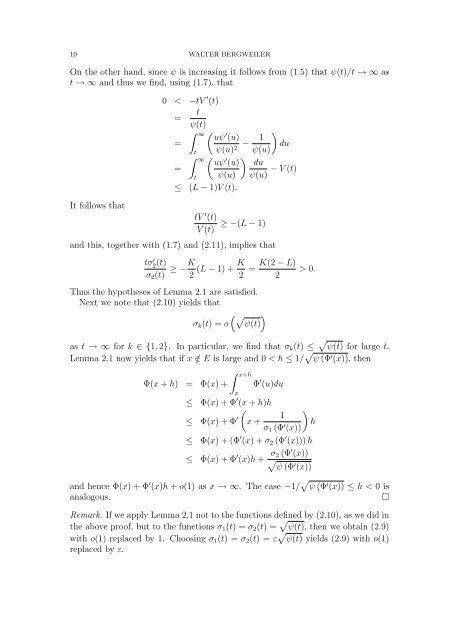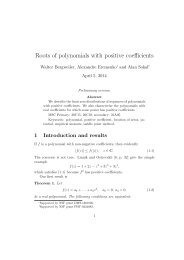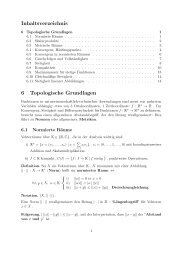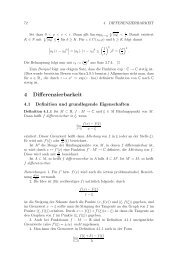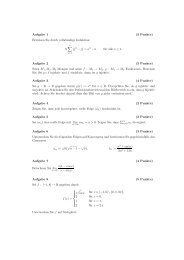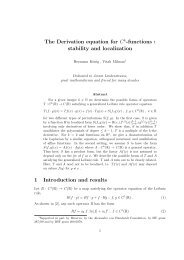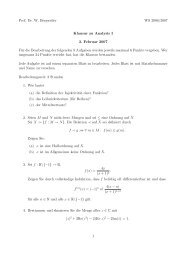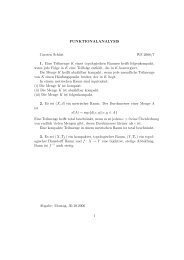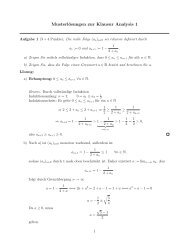r |f(z) - Christian-Albrechts-Universität zu Kiel
r |f(z) - Christian-Albrechts-Universität zu Kiel
r |f(z) - Christian-Albrechts-Universität zu Kiel
- No tags were found...
Create successful ePaper yourself
Turn your PDF publications into a flip-book with our unique Google optimized e-Paper software.
10 WALTER BERGWEILEROn the other hand, since ψ is increasing it follows from (1.5) that ψ(t)/t → ∞ ast → ∞ and thus we find, using (1.7), thatIt follows that0 < −tV ′ (t)t=ψ(t)∫ ∞( uψ ′ (u)=t ψ(u) − 12 ψ(u)∫ ∞( uψ ′ (u)=t ψ(u)≤ (L − 1)V (t).tV ′ (t)V (t))du) duψ(u) − V (t)≥ −(L − 1)and this, together with (1.7) and (2.11), implies thattσ ′ 2(t)σ 2 (t) ≥ −K 2 (L − 1) + K 2Thus the hypotheses of Lemma 2.1 are satisfied.Next we note that (2.10) yields that(√ )σ k (t) = o ψ(t)=K(2 − L)2> 0.as t → ∞ for k ∈ {1, 2}. In particular, we find that σ k (t) ≤ √ ψ(t) for large t.Lemma 2.1 now yields that if x /∈ E is large and 0 < h ≤ 1/ √ ψ (Φ ′ (x)), thenΦ(x + h) = Φ(x) +∫ x+hxΦ ′ (u)du≤ Φ(x) + Φ ′ (x + h)h)≤ Φ(x) + Φ(x ′ 1+hσ 1 (Φ ′ (x))≤ Φ(x) + (Φ ′ (x) + σ 2 (Φ ′ (x))) h≤ Φ(x) + Φ ′ (x)h + σ 2 (Φ ′ (x))√ψ (Φ′ (x))and hence Φ(x) + Φ ′ (x)h + o(1) as x → ∞. The case −1/ √ ψ (Φ ′ (x)) ≤ h < 0 isanalogous.□Remark. If we apply Lemma 2.1 not to the functions defined by (2.10), as we did inthe above proof, but to the functions σ 1 (t) = σ 2 (t) = √ ψ(t), then we obtain (2.9)with o(1) replaced by 1. Choosing σ 1 (t) = σ 2 (t) = ε √ ψ(t) yields (2.9) with o(1)replaced by ε.


